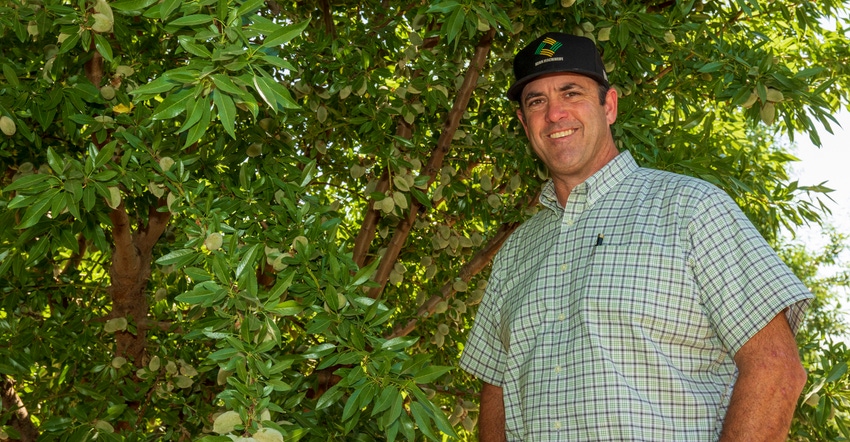
Farm managers with large acreages of permanent crops are challenged by many things. Surveying orchards or vineyards from a pickup window is limited at best and may miss critical issues just a few rows away.
Drone imagery can work, but with over 1.3 million acres of almonds alone, even individual farmers are challenged by the time and effort involved with that.
Ceres Imaging was borne in 2012 by this need to understand and address water stress in crops. Drones were first employed, according to John Bourne, vice president at Ceres Imaging. It quickly became apparent as the business grew that fixed-wing aircraft would be necessary to cover the large acreages needed across California crops.
History
Bourne said the technology for spectral imaging started with Stanford researchers trying to understand biomass in the Amazon. The thought occurred to see if the technology could be used for on-farm crop management decisions.
"In the early days we started flying drones and doing research collaborations at UC Davis," he said. "We were trying to understand what kind of problems we could solve with good, accurate representations of stem water potential. The focus was accuracy for decisions."
The transition to fixed wing aircraft became obvious as acreages needed covering grew. High accuracy thermal imagery is not possible currently with satellite and drones cannot carry the kinds of cameras necessary to achieve good thermal imagery, Bourne said.
Almonds
With growing almond acreage in California, farmers adopting the technology needed the access to imagery only a fixed wing aircraft, capable of covering large areas with high-resolution cameras, could achieve.
Joel Ackerknecht, vice president of operations with DM Camp & Sons near Bakersfield, Calif., says the imagery gives him a bird's eye view of orchard health that it is not possible to achieve with pressure bombs and moisture probes.
"It's been a good tool for us in finding those irrigation issues or tree issues," Ackerknecht said.
DM Camp & Sons farms mostly almonds in the south San Joaquin Valley of California, with smaller acreages of citrus and wine grapes. They've used Ceres Imaging for about five years. They will get six images a year of their crops, with notes that can help them target areas of concern.
Ackerknecht's ranch foremen and irrigators have access to the same information on their smart phones. They use the data more for checks and balances of good management strategies, versus planning irrigation scheduling, he said.
Ackerknecht receives his images via e-mail. These images can have notes from Ceres technicians. He can also add notes to the images for his irrigators and ranch foremen. Those images can easily be viewed on computer screens in colors that highlight plant stress. Over time, and with the understanding he has of his orchards and how the colors of red, yellow, blue, and green mean things, Ackerknecht has discovered nuances that could mean a single dead tree or a pest issue, rather than stress caused by an irrigation issue.
Knowing his orchards as he does, and how irrigation systems are laid out helps in understanding what the imagery suggests. Knowing the soil types and particular problem spots associated with all the above can also aid in determining which issues to address first.
For instance, some areas can present a battle between pushing too much water into certain segments of the almond orchard, while other trees along the same line can be deficit irrigated because of how the water collects at one end of the orchard. Seeing this from the imagery and that 30,000-foot view of the orchard can allow him to make management decisions in the real world of growing almonds.
Ackerknecht says Ceres' thermal imagery has improved over time, as has the information farmers have access to from the imagery.
Tools and unintended consequences
As farmers have shifted away from flood irrigation to precision systems, the advent of spectral imagery has helped pin-point problems with plugged irrigation systems, gophers, and insect pests. For instance, rodent and wildlife issues in almonds irrigated with precision systems became a new challenge to growers who once simply flood irrigated their orchards, which served also to help replenish aquifers.
While spectral imagery can show the trouble areas for farm managers to focus, it can also help them economize time by revealing the good areas that busy farm managers may not need to visit quite as often.
Ceres Imagery services are available primarily in specialty crops in much of the West, including California and the Pacific Northwest. They are also available in Canada and Australia.
More information on Ceres Imagery is available online at https://www.ceresimaging.net/
About the Author(s)
You May Also Like






